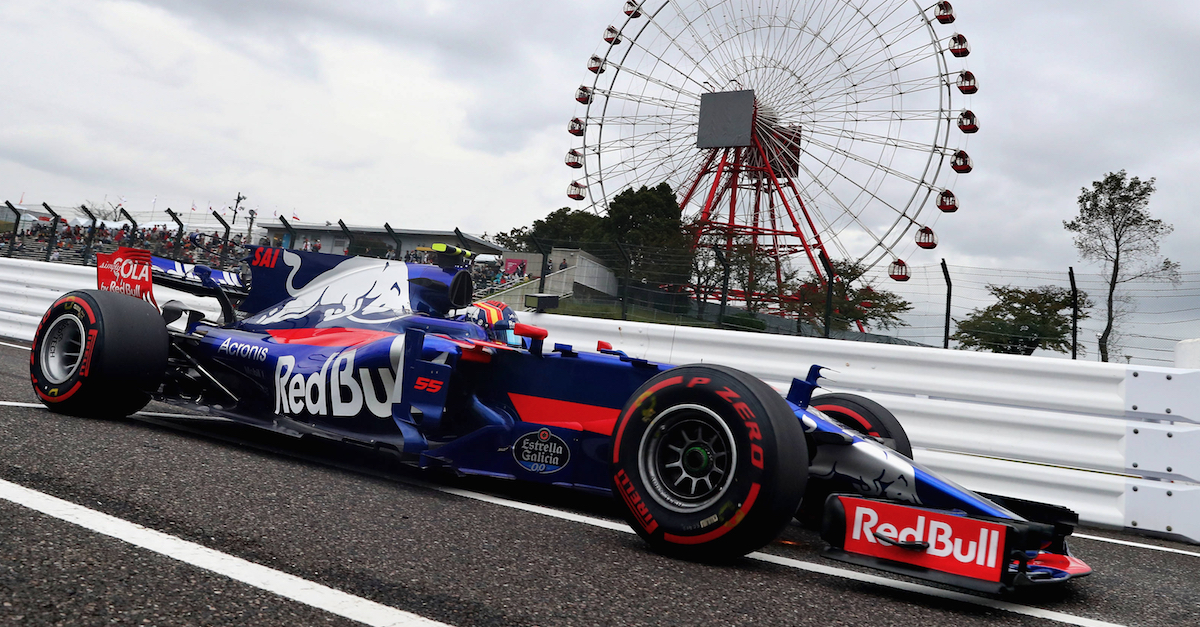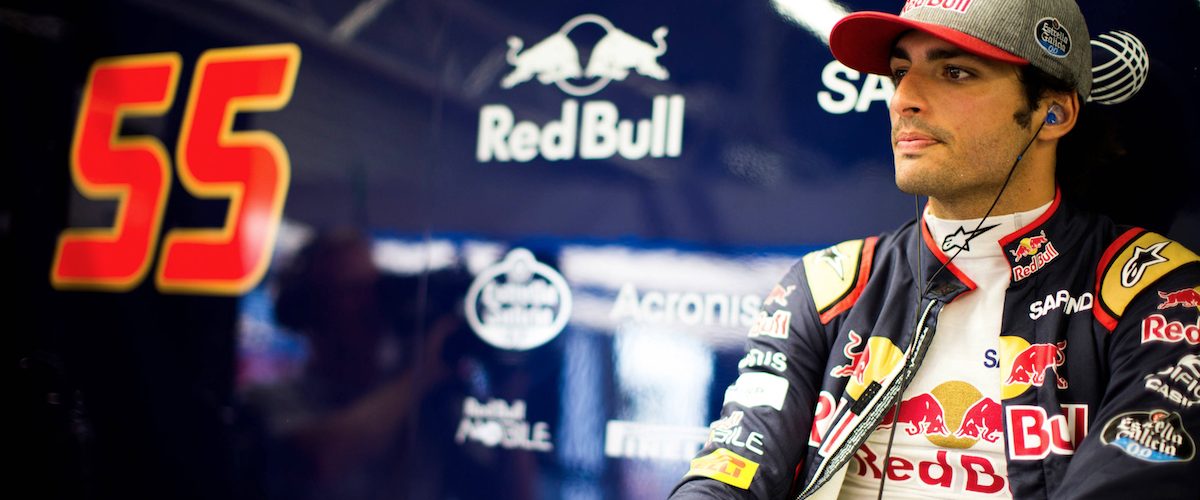The land of the rising sun turned out to be the land of the grey skies and rain showers on a Friday that saw more action in the pitlane than out on the track as team members entertained themselves by floating paper boats along the tarmac that now resembled rivers.
Unfortunately, when the cars did get out for limited running on the Friday, Carlos lost control of his STR12 and impacted heavily into the barriers. Thankfully, despite the fierce looking nature of the impact, Carlos emerged completely unscathed from the accident although the same could not be said of his car and a change of Power Unit would mean a frustrating 20 place grid penalty for Sunday.
Despite this, the mechanics did an incredible job to put the car back together and, combined with Pierre Gasly’s morning running, enough data was accumulated to build on for the weekend ahead.
Each racing weekend, Toro Rosso accumulates about a terabyte of telemetry data that is subsequently used to adjust the car and plan future races. Most of this data is processed in real time at the backroom in the garage and automatically sent back to the Faenza factory. In addition, the team uses Acronis Access Advanced, which allows them to share sensitive information between engineers with ultimate security — technology that is of the cutting edge for F1 teams because of its speed and reliability.
Because he would be starting from the back of the grid, Carlos decided not to run any new tyres for Q2, meaning fresh rubber for race day as Pierre piloted his car to 16th on the grid.

Determined to make inroads on his final outing for the team, Carlos decided to go for it as only he knows how but in a bold attempt to make up places, he lost control of his car and his race ended in the gravel trap as quickly as it had begun.
“I’d like to say sorry to the whole team for retiring on the first lap… I was trying to risk everything at the start to try and gain some positions, so I went around the outside at Turn 6 and I found a lot more dust on the track than I was expecting, and lost it; as simple as that,” said an apologetic Carlos afterward. “It’s a shame because I was really looking forward to finishing on a high here in Suzuka with the team but I’m going to remain positive: these three years here have been absolutely amazing.”
It was left for Pierre to bring his STR12 home an encouraging 13th, just out of the points on only his second drive for the team. And with Toro Rosso old boy Daniil Kvyat returning for Austin, Texas, there are reasons to be optimistic as the season reaches an exciting climax.
Crash tests
Although Carlos’ crash in free practice looked frightening, safety in Formula 1 has come a long way since the so-called ‘killer years’ of the 1960s and 1970s. Of course, every driver knows he is taking a significant risk every time he steps into the cockpit of an F1 car and accepts the risks involved in the engagement of their passion. Even when there have been huge impacts, such as Robert Kubica’s horror smash in Canada in 2007, such are the massive strides made in safety due to rigorous crash testing that drivers now walk away unscathed more often than not.
Prior to 1985, there were few safety regulations and no crash tests but since then, every team’s car must pass a series of stringent tests to adhere to the FIA’s safety regulations.
There are five dynamic tests comprising of two frontal impacts, one side impact, one rear impact and one steering-column impact and a number of static tests to evaluate the ability of the chassis to support the massive forces experienced in a high-speed crash.
For the frontal dynamic test, the chassis is mounted onto a trolley and fired at a solid wall and for the side and rear tests a heavy trolley is run into the chassis at force and a crash test dummy is also used to measure what happens to a driver in extreme deceleration. The dummy’s chest must not exceed 60g for more than 3 milliseconds. The side of the cockpit is also subjected to a 30-tonne load which it must resist with no evidence of structural failure.
Fires in accidents used to be one of the biggest factors in driver fatalities but the fuel tanks are now also subject to stringent load tests and the cell is made of the same rubberized penetration resistant Kevlar material that is used on armored cars. Thanks to this, the potential for injury due to fire is extremely low.
Racing car crashes are not uncommon. Following a crash, the car is carefully restored from spare parts and brought back to life in time for the next race. It’s very similar to system crash and data loss. With a reliable backup, data can be restored and systems brought back to life in time for when you need it.
In addition to Acronis Access Advanced that is used by Toro Rosso for secure file sharing, Acronis has a full range of data protection solutions for businesses, consumers, and service providers. For example, Acronis Backup 12.5 offers complete protection for all business data with an ability to restore systems in just 15 seconds. Acronis Snap Deploy helps system administrators to provision hundreds of systems as fast as they can provision one. Acronis Data Cloud offers backup, disaster recovery, and file sync and share for services providers on one innovative platform. And Acronis True Image gives consumers easy protection for all home computers, mobile devices, and social network accounts.
Images: © Red Bull Content Pool.



